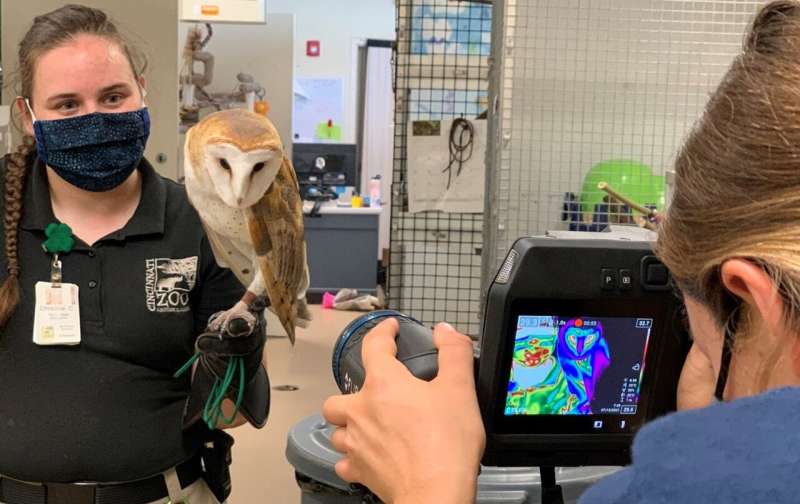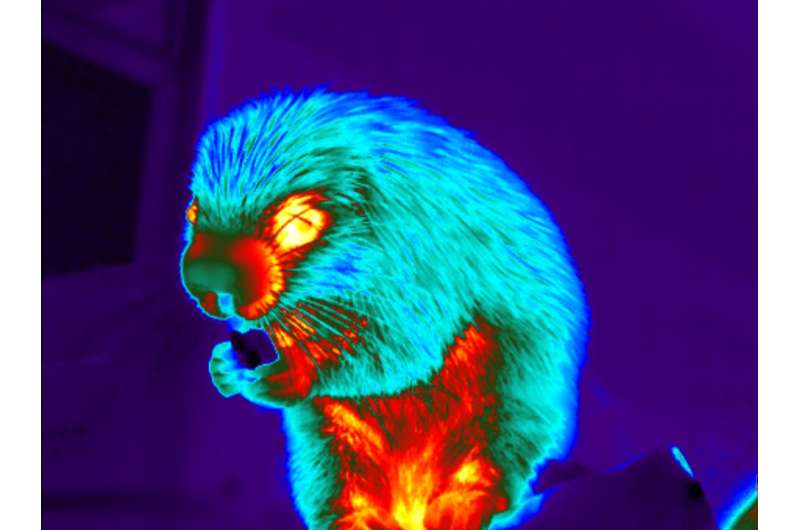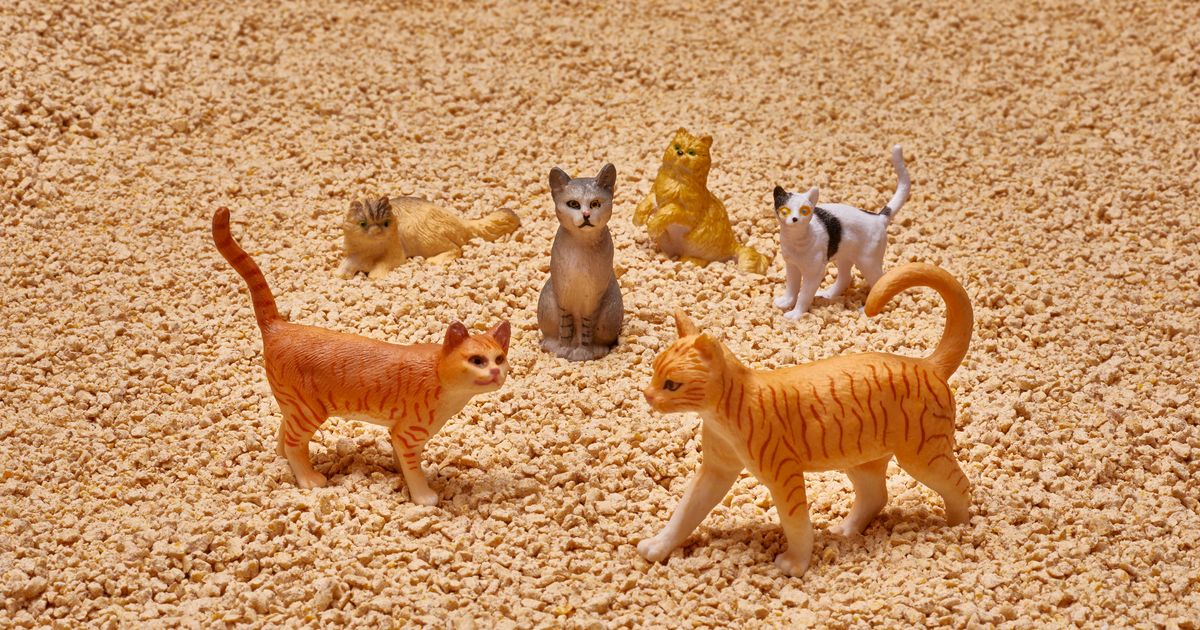
Diagnostic imaging these as X-rays, MRIs, and CT scans are important tools in monitoring the well being of individuals and animals. But for scientists in the industry, it is tough to administer these popular assessments on wild populations.
Now, scientists at the Woods Hole Oceanographic Institution (WHOI) are working with colleagues at the Cincinnati Zoo & Botanical Backyard garden and other zoos and aquariums to exam the use of thermal video and image analysis to measure heart and respiration prices in a wide range of animals in a steady environment.
The objective, say scientists, is to use this managed knowledge to advance the growth of non-invasive techniques of assessing animal wellbeing in the wild, in particular threatened and endangered species for which the dangers involved with far more invasive diagnostic approaches could be prohibitively higher.
A new paper detailing their do the job was published today in the journal BMC Biology.
The capacity to measure and check an animal’s metabolic charge, or energetic expenditure, delivers a window into a species’ reproductive and survival likelihood. Nevertheless, it is logistically hard, and often invasive, to accumulate these benchmark measurements in wild populations. Even easier tests these as obtaining heart and respiration rates, normally involve animals to be immobilized, which arrives with threats. Attaching tracking units can be high-priced and invasive.
Caroline Rzucidlo, a graduate university student in the MIT-WHOI Joint Application in Oceanography/Utilized Ocean Science & Engineering, led the study with colleagues such as Michelle Shero, an affiliate scientist at WHOI.
The staff set out to look into the utility of infrared thermography (IRT) coupled with Eulerian movie magnification (EVM) application in measuring the vital premiums of exotic wildlife species with an eye towards eventually implementing the procedure to finding out Weddell seal populations in Antarctica in purchase to figure out irrespective of whether the animals will be physiologically prepared to endure and reproduce in a fast transforming natural environment.
“Coronary heart and respiration fees are typically applied as proxies for pinpointing metabolic rate,” stated Rzucidlo. “Thermal cameras can detect adjustments in skin temperature affiliated with blood circulation and improvements in air temperature connected with exhalation. So, identifying if thermal cameras could non-invasively capture these temperature variations in animals was the initial move.”

A thermal movie camera can easily measure heat and overall body temperature, like the technologies employed to display human beings for fever at the airport, but could it be used to unique animals? Taking their work straight into the field was not an option due to the fact they very first desired to validate the precision and precision of the system, and these initial measures ended up additional suited to a controlled setting. “We experienced no strategy how efficiently we could evaluate temperature fluctuations with the thermal digicam, including how shut or far away from the animal we desired to be, and how fur, excess fat, or scale thickness would affect the readings,” she extra.
The Cincinnati Zoo & Botanical Backyard garden offered an great environment to test a vary of animals beneath diverse ailments to high-quality-tune their procedures. Working with Erin Curry, Reproductive Physiologist, and other animal care gurus, Rzucidlo spent months embedded at the facility to accumulate thermal video on a variety of terrestrial and maritime animals. Some of the get the job done took area at other amenities, which include the Louisville Zoo (Kentucky), Columbus Zoo and Aquarium (Ohio), and the Salisbury Zoo (Maryland). A whole of 58 unique animals participated in the study—from Komodo dragons to polar bears.
“Staying capable to check particular person animals less than human treatment made a controlled setting to validate this technological know-how that is difficult to replicate in the wild,” said Rzucidlo.
“Zoos give a unique location to establish technologies that can add to the conservation of wildlife populations. Animals in zoos have normal veterinary check out-ups and some people are even skilled to take part voluntarily in wellness tests, so applying a stethoscope to acquire accurate heartrates while concurrently gathering infrared online video of a assortment of species was a very achievable aim,” included Curry.
The team before long discovered that the thermal video clip on your own was not more than enough. “Capturing heat and temperature is one step, but we necessary the EVM laptop program to amplify adjustments in temperature linked with respiration amount and heartbeat,” defined Rzucidlo. “Utilizing the two alongside one another was the winning combination and provided us an unparalleled look at of animal health and fitness.”
Whilst thermal cameras have been utilized to extract crucial prices in a handful of species (mostly individuals with out hair), this is the initially research to use this know-how to a broad variety of unique animals and recognize what features make a species a very good candidate for acquiring measurements by way of thermal imaging.
“This new study normally takes thermal imaging knowledge in a controlled location and makes it possible for us to establish benchmarks across a suite of species. Acquiring produced and wonderful-tuned these approaches in the zoological placing, we can then acquire these imaging approaches and utilize it to solution significantly broader ecological inquiries in the wild,” said WHOI’s Shero.
“We have even been employing this system in Antarctica to review electricity dynamics in Weddell seal populations. We can use these freshly made techniques to get started inquiring how an animal’s energetic expenditure may possibly transform if environmental problems transform, or what the energetic calls for are for copy.”
“What is actually more, is that making use of non-invasive and speedily obtained imagery equipment will allow us to make better measurements with much less disturbance, and for a large amount a lot more animals than would ever have been possible using common methods. This is what is truly needed to start out inquiring thoughts about population wellbeing.”
More details:
Caroline L. Rzucidlo et al, Non-invasive measurements of respiration and heart price across wildlife species employing Eulerian Video clip Magnification of infrared thermal imagery, BMC Biology (2023). DOI: 10.1186/s12915-023-01555-9
Citation:
Exploring new ways to review coronary heart amount, respiration in wild animal populations (2023, March 29)
retrieved 30 March 2023
from https://phys.org/news/2023-03-exploring-approaches-coronary heart-respiration-wild.html
This doc is topic to copyright. Aside from any reasonable dealing for the objective of private review or exploration, no
component may be reproduced with no the published authorization. The written content is provided for info applications only.
